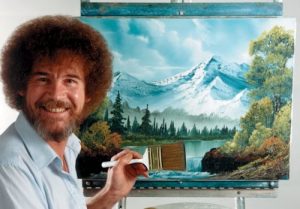
During board game night a discussion broke out about how is art defined? While we delivered in the Wasteland Express the software developer opined that his job was artistic but that of an engineer was not. This being true because the medium in which the engineer worked was more greatly constrained.
Needless to say, strong opinions were hurled. I find the question of how is Art Defined to be an interesting question but the moral of the story, and the point of this blog, is more about how to we come to a consensus on a question that, by its nature, has no easy answer.
At issue; at least for the fellow trying to define software development as art, is how to we determine if an endeavor is so constrained that it can no longer be considered art. When confronted by thorny issues of this nature I think the best strategy is to simplify the question as best as is possible. It’s always going to be difficult, if not impossible, to determine what constitutes a line in the sand as far as constraints and be able to get to the bottom of Art Defined.
I started, on the drive home after having been thoroughly thrashed in the Wasteland yet again because I have too much fun making deliveries and taking on raiders and forget about the Victory Conditions, but that’s my issue and I’ve completely lost the train of thought on this sentence, best start again. As I was driving home, I thought about how most people who play chess at a moderately high level consider a well-played combination to be artistic. Certainly, chess has more constraints than engineering. If a game of chess can be artistic then we must conclude that a particular engineering design can be as well.
That being said, I must simplify further. How about checkers, I said to myself while waiting at a red light. Darn those red lights. No, even better, Tic Tac Toe. If we are going to simplify, let’s go all the way. Can Tic Tac Toe be artistic? No, I said to myself. End of story! Wait, I argued with myself, don’t be so hasty, Tom. Really? I replied. Yep, I answered. Let me give you an example.
In Game One the O player makes three moves and wins the game because the X player doesn’t make a blocking move. In Game Two the O player makes moves so as to block player X and set up a situation where she or he has two paths to victory and cannot be blocked. Is not Game Two more artistic than Game One?
We’ll, I said aloud to myself as the couple in the car one over looked at me like I was crazy. Did I mention I was waving my arms and hands to illustrate the moves on the Tic Tac Toe board? Well, you may have a point, I said nodding to the superior knowledge of me.
No, problem, I replied in an attempt at modesty. You would have come to the same conclusion if given enough time. Thanks, I said, although I suspect I was being a little condescending to myself.
In any case, if we decide that one Tic Tac Toe game can be more artistic than another, we are admitting the game can be artistic, although perhaps less so than a chess game, but artistic nevertheless. If this is true, it seems impossible to conclude anything other than all human endeavors possess the possibility of being artistic, regardless of how constrained they might be. There is the potential for art in all things.
This being the case, which I think I’ve proved to myself beyond a reasonable doubt, I think all engineers can now rest easy knowing they are capable of artistic designs. Now that I’ve resolved Art Defined, let’s tackle a bigger problem. How can I possible win a game of Wasteland Express if I don’t pay any attention to the Victory Conditions … a mystery that may never be solved.
Tom Liberman


